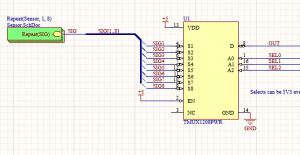The time in class this week was spent peer reviewing team presentations. While we weren’t able to see the results of the peer review, we saw some good feedback on the hardware of our design. We will be further testing the possibilities with the chess pieces and what we can do to optimize accuracy with the chess pieces.
With regard to my progress for the week, I was able to catch up (from my illness last week) and create a rudimentary website that can take arbitrary notation. One small flaw that I found to be true over my progress (but should communicate with Byron and Alex) is that there is a need for a secondary notation legality check in the web app (following the reception of data in the API). This is to prevent users from sending flawed data to the website as well as allowing the check for errors.
All in all, I am currently still working on adapting the results of Patricks notation into chess notation (caught some bugs from my implementation last week) and should be able to have a demo ready by the end of next week! At that point, the majority of the software work will be done on optimizing the backend of the website for the database.
I am currently on track to complete the project in time, this week was quite productive!

 The bimodal sensor outputs 5V for a high strength magnet. As you can see in the chart, our highest strength magnet only resulted in a 3.4V output. We learned that our calculations for magnetic field strength at a small distance from the surface gauss and the height of the magnet were above the real quantities. From this, we know we have to find some stronger/larger magnets to buy if we want to distinguish between piece types. We should have an order in for those by Tuesday, and can do some preliminary tests with them inside the chess pieces next weekend.
The bimodal sensor outputs 5V for a high strength magnet. As you can see in the chart, our highest strength magnet only resulted in a 3.4V output. We learned that our calculations for magnetic field strength at a small distance from the surface gauss and the height of the magnet were above the real quantities. From this, we know we have to find some stronger/larger magnets to buy if we want to distinguish between piece types. We should have an order in for those by Tuesday, and can do some preliminary tests with them inside the chess pieces next weekend.

Recent Comments